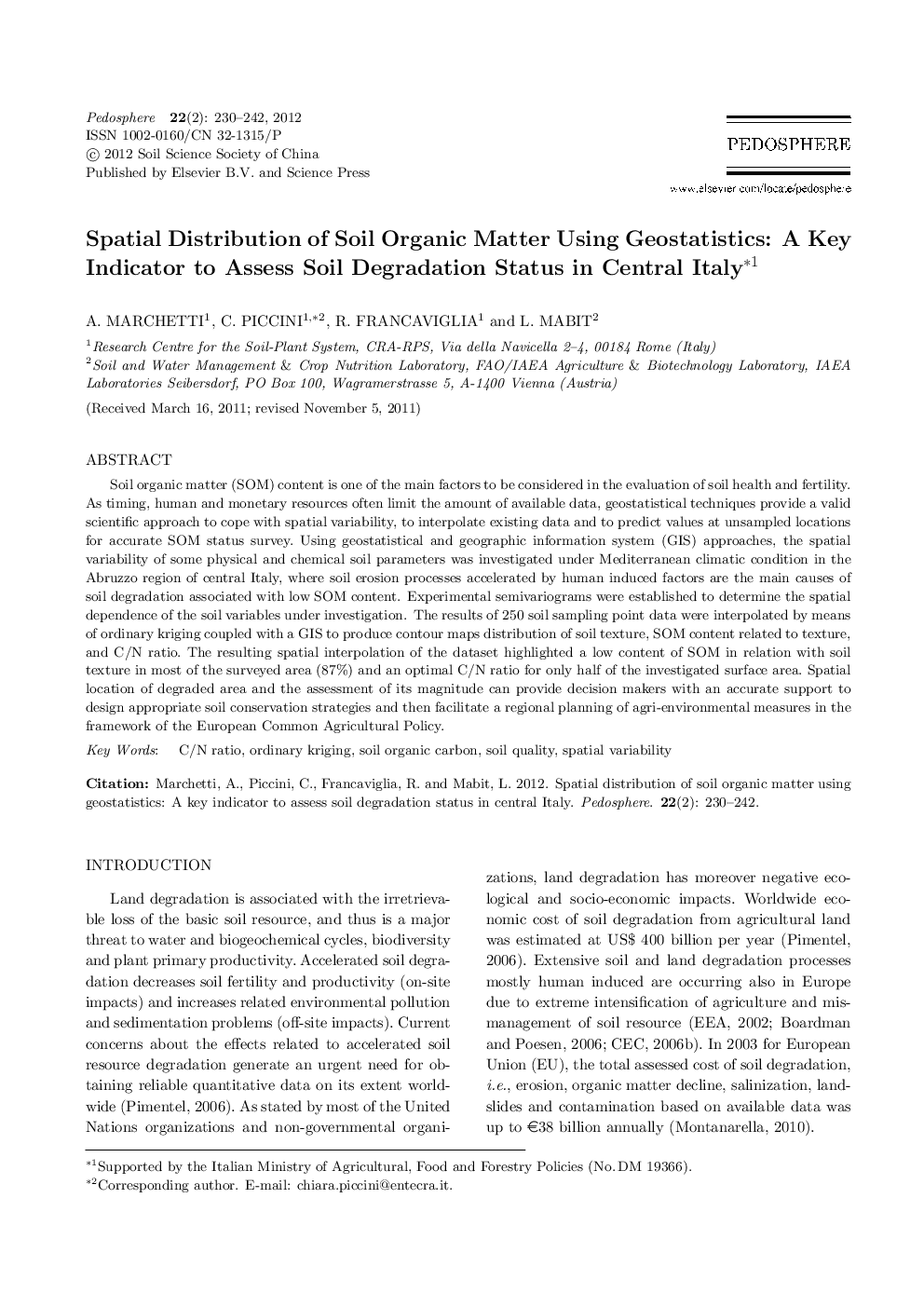| Article ID | Journal | Published Year | Pages | File Type |
|---|---|---|---|---|
| 4581640 | Pedosphere | 2012 | 13 Pages |
Soil organic matter (SOM) content is one of the main factors to be considered in the evaluation of soil health and fertility. As timing, human and monetary resources often limit the amount of available data, geostatistical techniques provide a valid scientific approach to cope with spatial variability, to interpolate existing data and to predict values at unsampled locations for accurate SOM status survey. Using geostatistical and geographic information system (GIS) approaches, the spatial variability of some physical and chemical soil parameters was investigated under Mediterranean climatic condition in the Abruzzo region of central Italy, where soil erosion processes accelerated by human induced factors are the main causes of soil degradation associated with low SOM content. Experimental semivariograms were established to determine the spatial dependence of the soil variables under investigation. The results of 250 soil sampling point data were interpolated by means of ordinary kriging coupled with a GIS to produce contour maps distribution of soil texture, SOM content related to texture, and C/N ratio. The resulting spatial interpolation of the dataset highlighted a low content of SOM in relation with soil texture in most of the surveyed area (87%) and an optimal C/N ratio for only half of the investigated surface area. Spatial location of degraded area and the assessment of its magnitude can provide decision makers with an accurate support to design appropriate soil conservation strategies and then facilitate a regional planning of agri-environmental measures in the framework of the European Common Agricultural Policy.
